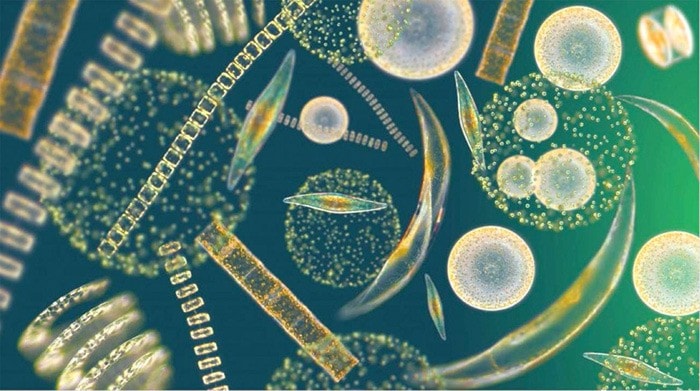The theme of this year’s Heritage Week in B.C. (Feb 17 to 23) is "Heritage Afloat" and a variety of activities are planned in local communities to celebrate fishing, Captain Vancouver’s voyages, early settlers’ boat travel, and so on. These are the traditional concepts of heritage and will be interesting and fun. Yet we should also consider the natural heritage that has supported an unbroken chain of human life since the end of the last ice age.
The heritage of Delta and Surrey includes the salt waters of the Georgia Strait washing our shores. Their ebb and flow creates the estuarine ecosystems of marsh and slough and the sandy beaches of White Rock and Blackie Spit. It includes the Fraser River that brings life-giving fresh water to the lowlands and deposits sediments that build up the delta landscape and the networking tributaries of the Serpentine, Nicomekl and Little Campbell Rivers flowing through the heart of urban and farming communities.
 Afloat in all these waters are microscopic, light-loving phytoplankton, literally "plant wanderers," that drive the food chain as they drift the waters of the world. These tiny plants capture sunlight in ring-shaped molecules of green pigment called chlorophyll. During photosynthesis, the conversion of light to chemical energy, stored as sugar, the world’s phytoplankton absorb carbon dioxide from the air and release half the earth’s oxygen. What more essential organisms could there be?
Afloat in all these waters are microscopic, light-loving phytoplankton, literally "plant wanderers," that drive the food chain as they drift the waters of the world. These tiny plants capture sunlight in ring-shaped molecules of green pigment called chlorophyll. During photosynthesis, the conversion of light to chemical energy, stored as sugar, the world’s phytoplankton absorb carbon dioxide from the air and release half the earth’s oxygen. What more essential organisms could there be?
Phytoplankton thrive in the presence of certain nutrients, such as nitrate, phosphate and iron. This is why a group from Haida Gwaii attempted, controversially, to increase phytoplankton by depositing iron into the ocean. With good conditions, plankton proliferate rapidly, spreading through the water; a large bloom can be visible from space. This attracts animal life, as herbivorous species eat the phytoplankton and are in turn preyed upon by carnivores. In contrast, excessive nutrient enrichment, or eutrophication, from fertilizer spills, agricultural run-off, or poor water circulation, can cause harmful algal blooms and the death of marine life. Eutrophication is a concern on Roberts Bank, at the mouth of the Fraser River, where tidal movements have been affected by the port and ferry terminal causeways.
The marine food web is complex. As organisms at the lowest end, phytoplankton provide food for a host of slightly larger creatures, including zooplankton ("animal drifters") like jellyfish and the tiny larvae of fish, and crustaceans such as copepods and krill. Copepods are a huge source of protein for fish, seabirds and mammals. Krill, one of the smallest animals on earth, is eaten by blue whales, the largest.
Delta and Surrey are a maritime communities, built from the watery landscape at the mouth of the mighty Fraser river. The lowly phytoplankton is the epitome of Heritage Afloat, as it drifts the planet’s waters, making life possible by changing sunlight into life’s breath and food.
Anne Murray is an independent writer, naturalist and author of two books on the natural history of Boundary Bay: A Nature Guide to Boundary Bay and Tracing Our Past ~ A Heritage Guide to Boundary Bay, www.natureguidesbc.com. She blogs at www.natureguidesbc.wordpress.com
